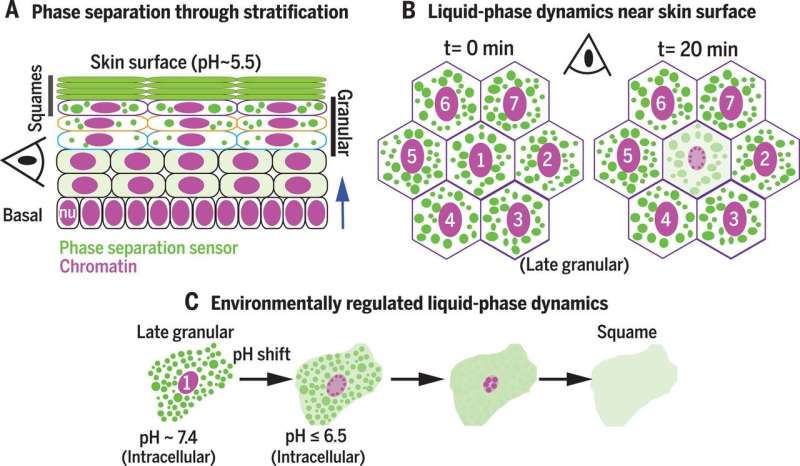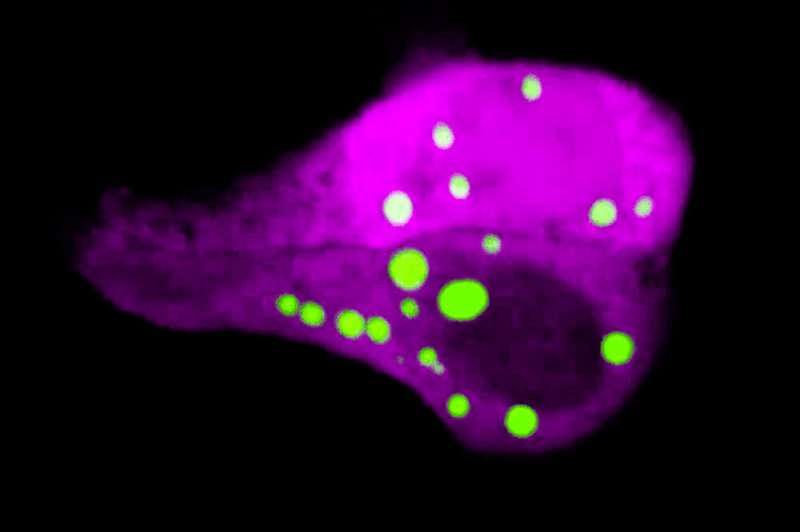March 13, 2020 report
Phase separation problems with proteins in skin found to account for some skin diseases

A team of researchers at Rockefeller University has found that phase separation problems with proteins in the skin may account for the development of some skin diseases. In their paper published in the journal Science, the group describes their study of liquid-liquid phase separation in mouse tissue and what they found. Arpan Rai and Lucas Pelkmans with the University of Zurich have published a Perspective piece discussing the work done by the team in New York in the same journal issue.
Prior research has shown that the outermost part of the skin, the epidermis, is made up of keratin-producing cells called keratinocytes. The epidermis is made up of layers of such cells that constantly engage in an upward flux toward the surface. And as they do so, they undergo a transformation, losing their organelles, and in so doing, become squams—and eventually die altogether and are cast off into the environment. The layer of squams on the surface form a protective barrier between the environment and the body's inner tissues. In this new effort, the researchers sought to learn more about the process by which cells in the epidermis undergo their transformation as part of an effort to better understand skin diseases, including cancer.
To learn more about the process, the researchers studied mouse tissue. More specifically, they looked at profilaggrin—a protein filament that typically resides in the stratum granulosum—the layer of skin just beneath the stratum corneum (surface layer). They found that heratohyalin granules that are created during a liquid-liquid phase separation of profilaggrin engage in interactions with keratin filaments, which are part of the process of organization of keratinocytes during differentiation. And the phase separation was due to differentiation-specific proteins accumulating in the keratinocytes, which underwent a type of phase transition as a result, similar to the separation of vinegar and oil. And that led to crowding the cytoplasm with increasingly viscous protein droplets. The result was keratohyalin granules dissolving, resulting in profilaggrin morphing into monomers. Those monomers than interacted with other proteins, resulting in the formation of an intracellular protein matrix.

The researchers conclude by suggesting interruptions to skin dynamics (particularly mutations that result in maladapted lipid phase transitions) likely play a significant role in the development of skin barrier diseases.
More information: Felipe Garcia Quiroz et al. Liquid-liquid phase separation drives skin barrier formation, Science (2020). DOI: 10.1126/science.aax9554
Journal information: Science
© 2020 Science X Network

















